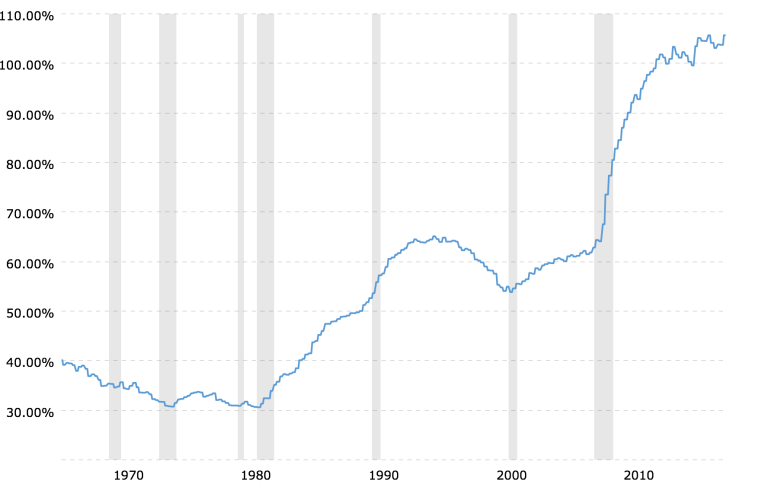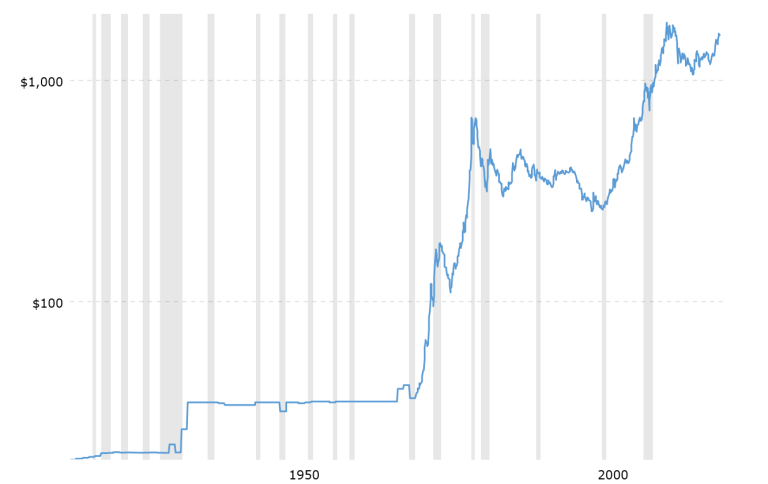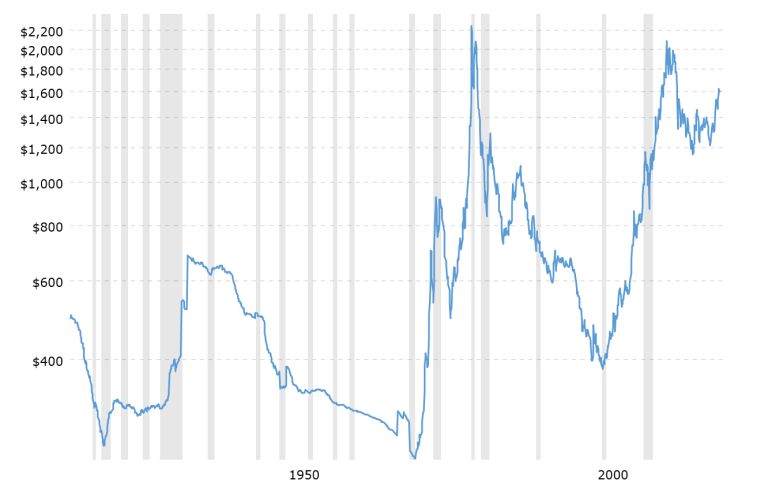Expectations For Higher Gold Prices – Fly In The Ointment
Commodities / Gold & Silver 2020 Apr 10, 2020 - 12:32 PM GMTBy: Kelsey_Williams
From Wikipedia: “In English, the phrase fly in the ointment is an idiomatic expression for a drawback, especially one that was not at first apparent, e.g.
We had a cookstove, beans, and plates; the fly in the ointment was the lack of a can opener.”
For four centuries, ‘a fly in the ointment’ has meant a small defect that spoils something valuable or is a source of annoyance. The modern version thus suggests that something unpleasant may come or has come to light in a proposition or condition that is almost too pleasing; that there is something wrong hidden, unexpected somewhere.”
In general, with gold prices currently at $1500-1600 per ounce, the expectation among participants in the gold trade today is for much higher gold prices going forward. And most of them, I think, seem to believe it will happen sooner, rather than later; and quickly, too.
Their enthusiasm rests on two assumptions: 1) That the new unlimited amounts of cheap credit made available by the Federal Reserve is hugely inflationary. 2) That the effects of the inflationary avalanche will destroy the US dollar, thus resulting in higher gold prices.
On the surface, both statements are logical and rooted in correct fundaments. But there is a fly in the ointment. In this case the fly in the ointment is deflation.
DEFLATION MEANS LOWER GOLD PRICES
Deflation is the exact opposite of inflation. It is characterized by an increase in purchasing power of the currency involved, in this case, the US dollar. The result is that the US dollar would actually buy more, not less; although the supply of US dollars would be significantly less.
A stronger US dollar means a lower US dollar gold price – not a higher one. If you are betting on higher gold prices, a stronger US dollar could also be considered as the fly in the ointment.
There are a couple of reasons why deflation, a stronger US dollar and lower gold price, and a full-scale depression are possible; maybe even likely.
One is that the Fed’s intentional inflation is having less and less impact. Federal debt as a percentage of GDP was declining in the sixties and seventies and reached a seemingly moderate level of about thirty percent in 1980. Since that time it has doubled and then doubled again. See the chart below…

(Chart of historical data comparing the level of gross domestic product -GDP – with Federal Debt.)
Think of how much money and credit was created in response to the credit crisis of 2007-08 and how laborious and inefficient was the attempt at economic recovery. Remember, how concerned the Fed was that they were not hitting their 2% inflation target? (see The Fed’s 2% Inflation Target Is Pointless)
Also, remember the expectations for more severe effects from the hugely higher inflation efforts of the Fed; namely, much higher prices for all goods and services, and possibly runaway inflation.
Both of the above examples might be compared to a drug addict who, after years of substance abuse, and continually higher doses with the drug of choice, shows no signs of response from the latest fix. (see Fed Inflation Is Losing Its Intended Effect)
It is quite possible that the current efforts of the Fed will be greeted similarly, or worse. In other words, maybe no amount of help from the Fed will be enough to turn things around.
The ensuing price – and credit – collapse could very possibly overwhelm the efforts of the Federal Reserve. With prices of all assets lower by sixty percent or more, the relative strength in the US dollar will show up in a much lower gold price.
GASOLINE ALREADY BELOW $2 PER GALLON
If you are looking for some immediate evidence of the increase in in purchasing power – and stronger US dollar – look no further than your local gas pump. I filled my tank up at Costco the other day. The price of unleaded (87 octane) gasoline was $1.99 per gallon.
Some will argue that all of this is temporary; and that the US dollar, whatever strength it might currently enjoy, is doomed. After all, the amount of inflation that has already been created by the Fed appears to be such that the dollar could soon be better used as wallpaper.
The US dollar has already lost more than ninety-eight percent of is value over the past century; and we owe it all to the stellar efforts of the Federal Reserve who continually attempt to “manage the stages of the economic cycle”. Actually, all they do now is react to the problems associated with the mess they have created.
Over time, the effects of inflation created by the Fed show up in a US dollar that continues to lose value and the price of gold reflects this by moving higher over time. That is shown on the chart immediately below…

So, it seems realistic to assume that an overdose of new money and credit could kill the US dollar for good and send gold prices higher. I agree; but…
There are some variables that gold bulls have overlooked…
- The effects of inflation are volatile and unpredictable.
- The prospects for a stronger US dollar and lower gold prices warrants more than passing nod.
Some assume that weaker economic activity, even recessions or depressions, will translate into higher gold prices. They watch the headlines and reports about housing starts, unemployment, etc. expecting to see higher gold prices as a result of disappointing economic statistics.
Those things have nothing at all to do with gold prices. NOTHING you can think of will change the price of gold in US dollars except changes in the US dollar.
There are some who say that even if the US dollar doesn’t totally collapse, we will still see much higher gold prices. That is because they base their expectations on non-fundamentals such as the ongoing pandemic, slowdowns (or stoppages) in economic activity, social unrest, wars, interest rates, political upheaval, etc.
PRICE OF GOLD IS ALL ABOUT THE US DOLLAR
Here is the same chart (source for all charts) as above, except that the one-hundred year history of gold prices is adjusted for inflation. It illustrates clearly the link between the US dollar and the price of gold…

The major price points on the chart correspond with the years 1920, 1934, 1970, 1980, 2001, 2011. They also coincide with changes in value of and sentiment for the US dollar.
Hence, throughout the 1930’s and up until 1970, the actual purchasing power of the US dollar was stronger, resulting in a lower inflation-adjusted gold price. Then, a huge catch up phase from 1970 until 1980, re: the effects of several decades of government inflation, took the US dollar lower and gold prices higher.
The pattern continued, with lower gold prices and a stronger dollar between 1980 and 2000. From 2001 until 2011, a weaker US dollar resulted in higher gold prices.
Since 2011, the US dollar has continued to strengthen and gold has declined. The current retracement in gold prices for the past four years may be likened to the period leading up to its price collapse in early 1988.
Since the pressure of deflation results in a much stronger dollar, expectations for higher gold prices are illogical and ill-advised.
Kelsey Williams is the author of two books: INFLATION, WHAT IT IS, WHAT IT ISN’T, AND WHO’S RESPONSIBLE FOR IT and ALL HAIL THE FED!
By Kelsey Williams
http://www.kelseywilliamsgold.com
Kelsey Williams is a retired financial professional living in Southern Utah. His website, Kelsey’s Gold Facts, contains self-authored articles written for the purpose of educating others about Gold within an historical context.
© 2020 Copyright Kelsey Williams - All Rights Reserved Disclaimer: The above is a matter of opinion provided for general information purposes only and is not intended as investment advice. Information and analysis above are derived from sources and utilising methods believed to be reliable, but we cannot accept responsibility for any losses you may incur as a result of this analysis. Individuals should consult with their personal financial advisors.
© 2005-2022 http://www.MarketOracle.co.uk - The Market Oracle is a FREE Daily Financial Markets Analysis & Forecasting online publication.



